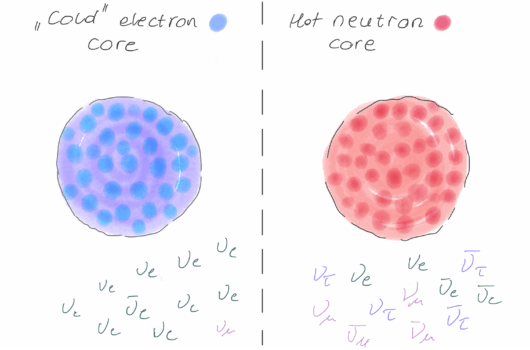Solar neutrinos and ν2 visible decays to ν1
Solar neutrinos and ν2 visible decays to ν1
View
Abstract
Experimental bounds on the neutrino lifetime depend on the nature of the neutrinos and the details of the potentially new physics responsible for neutrino decay. In the case where the decays involve active neutrinos in the final state, the neutrino masses also qualitatively impact how these manifest themselves experimentally. In order to further understand the impact of nonzero neutrino masses, we explore how observations of solar neutrinos constrain a very simple toy model. We assume that neutrinos are Dirac fermions and there is a new massless scalar that couples to neutrinos such that a heavy neutrino – ![]() with mass
with mass ![]() – can decay into a lighter neutrino –
– can decay into a lighter neutrino – ![]() with mass
with mass ![]() – and a massless scalar. We find that the constraints on the new physics coupling depend, sometimes significantly, on the ratio of the daughter-to-parent neutrino masses, and that, for large enough values of the new physics coupling, the “dark side” of the solar neutrino parameter space –
– and a massless scalar. We find that the constraints on the new physics coupling depend, sometimes significantly, on the ratio of the daughter-to-parent neutrino masses, and that, for large enough values of the new physics coupling, the “dark side” of the solar neutrino parameter space – ![]() – provides a reasonable fit to solar neutrino data. Our results generalize to other neutrino-decay scenarios, including those that mediate
– provides a reasonable fit to solar neutrino data. Our results generalize to other neutrino-decay scenarios, including those that mediate ![]() when the neutrino mass ordering is inverted mass and
when the neutrino mass ordering is inverted mass and ![]() , the mass of
, the mass of ![]() .
.





